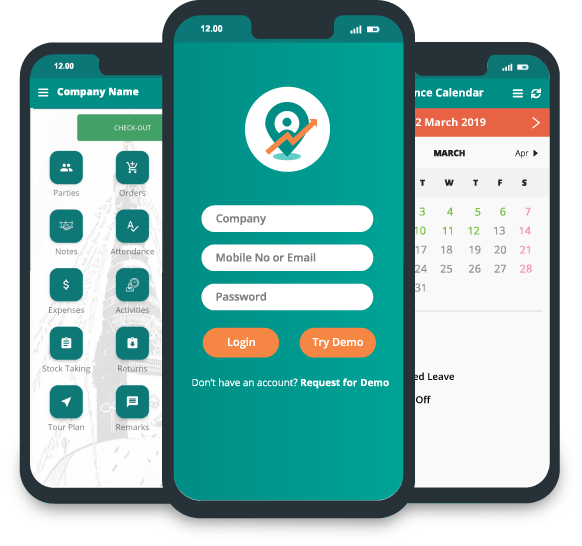Streamlining Direct Customer Orders: A Guide for Field Sales Teams

Are you tired of the tedious process of taking direct customer orders? Do you find yourself drowning in paperwork and struggling to keep track of sales data? Look no further, because we've got just the solution for you. In this blog post, we'll guide field sales teams through the process of streamlining their direct customer orders. Say goodbye to manual order-taking and hello to a more efficient way of doing business. Get ready to revolutionize your sales strategy!
Introduction to Direct Customer Orders
When it comes to streamlining direct customer orders, field sales teams need to be able to quickly and easily add new customers, view customer information, create orders, and track order status. Luckily, there are a few key steps that can make this process a breeze.
First, it's important to have a centralized system for managing customer information. This way, all of your team's data is in one place and easy to access. Having an up-to-date customer database will also make it easier to generate reports and spot trends.
Next, you'll want to streamline the process of creating new orders. This can be done by setting up templates for common order types. Once you have your templates set up, you can simply fill in the necessary information and hit submit. This will save your team valuable time when placing orders.
You'll need a way to track order status so you can keep your customers updated on the status of their purchase. There are a few different ways to do this, but one option is to use a CRM system that includes an order management module. This will allow you to see all of your team's active orders in one place and quickly update customers on their status.
By following these steps, you can streamline the process of taking direct customer orders and make life easier for your field sales team.
Benefits of Streamlining Direct Customer Orders
There are many benefits to streamlining direct customer orders for field sales teams. Perhaps the most obvious benefit is that it can save the team time and money. By having a streamlined process in place, the team can avoid duplication of effort and wasted time spent on tasks that could be automated. In addition, a streamlined process can help to ensure accuracy and consistency in customer orders, which can lead to improved customer satisfaction.
Another benefit of streamlining direct customer orders is that it can help to improve communication between the sales team and customers. Having a clear and concise process in place can help to reduce confusion and miscommunication, which can often lead to delays or errors in orders. By having a streamlined process, the sales team can provide customers with clear instructions on how to place their orders, as well as updates on the status of their order throughout the fulfilment process.
Streamlining direct customer orders can also help to build trust and rapport between the sales team and customers. Customers who have a positive experience with the ordering process are more likely to trust the sales team and be repeat customers in the future. In contrast, customers who have a negative experience with the ordering process are less likely to trust the sales team and may take their business elsewhere.
What is the Process for Streamlining Direct Customer Orders?
The process for streamlining direct customer orders is a simple one that can be broken down into four steps:
1. Define what you want to streamline.
This may seem like a no-brainer, but it's important to take the time to really think about what parts of the customer ordering process you want to make more efficient. Do you want to speed up order entry? Make it easier for customers to find the products they need? Improve communication between your sales team and your fulfillment center? Once you've identified your goals, you can move on to the next step.
2. Gather data.
Now that you know what you want to improve, it's time to start collecting data about how the current process works. This could involve shadowing a salesperson as they take an order, conducting customer surveys, or simply observing and taking notes on the current process. The more data you have, the better equipped you'll be to identify areas of improvement.
3. Analyze the data.
Once you've gathered all your data, it's time to sit down and analyze it. Look for patterns and trends in the way orders are currently being taken and processed. Are there any bottlenecks or pain points that are causing delays? Are there opportunities to automate or streamline any part of the process? This is where your creativity and critical thinking skills will come in handy!
4. Implement changes and track results.
Implementing changes and tracking results in the process of streamlining direct customer orders involves making necessary adjustments to the order management system, such as automating processes, improving communication, and optimizing workflows. By monitoring and analyzing the outcomes of these changes, field sales teams can identify areas of improvement and make data-driven decisions to enhance the efficiency and effectiveness of direct customer orders.
Who Should Be Involved in the Process?
There are a few key players that should be involved in the process of streamlining direct customer orders for field sales teams. The first is, of course, the field sales team itself. They are the ones who will be using the streamlined process and they should have a say in how it works. The second is the person or people who manage the field sales team. They will need to be involved in order to make sure that the process works for everyone and that it fits into the overall system. You will also need to involve your customers. They are, after all, the reason that you are doing this in the first place! Make sure to get their input and feedback throughout the process so that you can make sure that you are meeting their needs.
Common Challenges and Solutions
As the world of business becomes more and more competitive, companies are looking for ways to streamline their operations and reduce costs. One area that has seen a lot of attention in recent years is direct customer orders.
There are a number of challenges that can arise when taking orders directly from customers, but with a little planning and foresight, these challenges can be overcome. Let's take a look at some of the most common challenges and their solutions.
One of the biggest challenges is making sure that all of the necessary information is collected when taking an order. This includes things like the customer's contact information, what they are ordering, how many they are ordering, etc. The best way to ensure that all of this information is collected is to use a standard order form that can be filled out by the salesperson. This form should be designed so that it is easy to understand and use, and it should be able to be completed in a few minutes.
Another common challenge is ensuring that orders are processed correctly and in a timely manner. This can be difficult if there is not a clear process in place for handling orders. To streamline order processing, it is important to have a system in place where orders are automatically routed to the correct person or department for processing. This will help to ensure that orders are not lost or forgotten about, and that they are processed as quickly as possible.
Best Practices for Streamlining Direct Customer Orders
When it comes to streamlining direct customer orders, there are a few best practices that field sales teams can follow:
1. Use an order management system: An order management system can help automate and keep track of customer orders from start to finish. This can be a valuable tool for field sales teams who manage direct customer orders on a regular basis.
2. Keep communication lines open: It is important to keep communication lines open between the field sales team and the customer. This way, any questions or concerns can be addressed in a timely manner.
3. Stay organized: Staying organized is key when it comes to managing direct customer orders. Having a plan and keeping track of deadlines can help ensure that everything runs smoothly.
4. Follow up after the sale: Once an order has been placed, it is important to follow up with the customer to make sure they are satisfied with their purchase. This is a good opportunity to build relationships with customers and ensure they will continue doing business with your company in the future.
Conclusion
Streamlining direct customer orders is a great way to ensure that your field sales teams are able to offer the best service possible. By providing a comprehensive guide for streamlining processes, you can make sure that every step of the process works smoothly and efficiently. Doing so can help streamline orders, improve customer satisfaction, and drive more business from existing customers. With these tips in mind, your field sales teams will be well-equipped to handle any order with ease!








